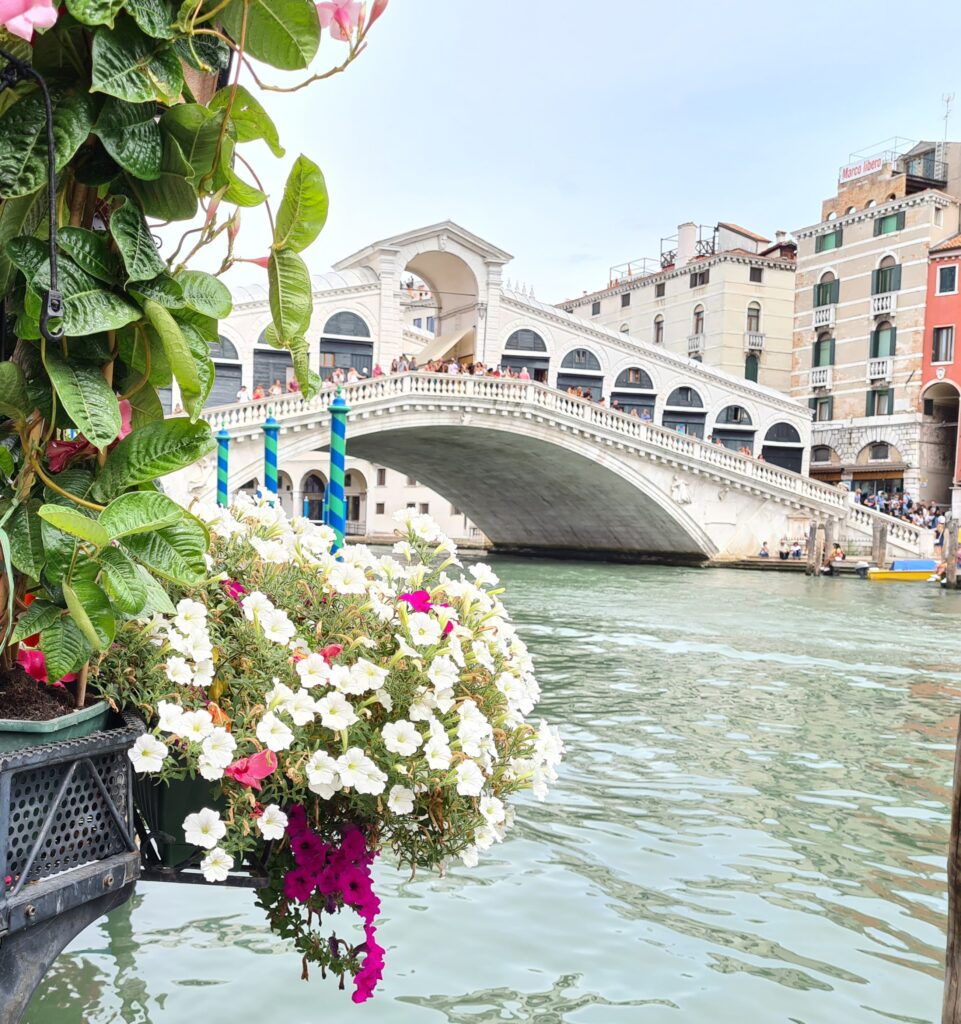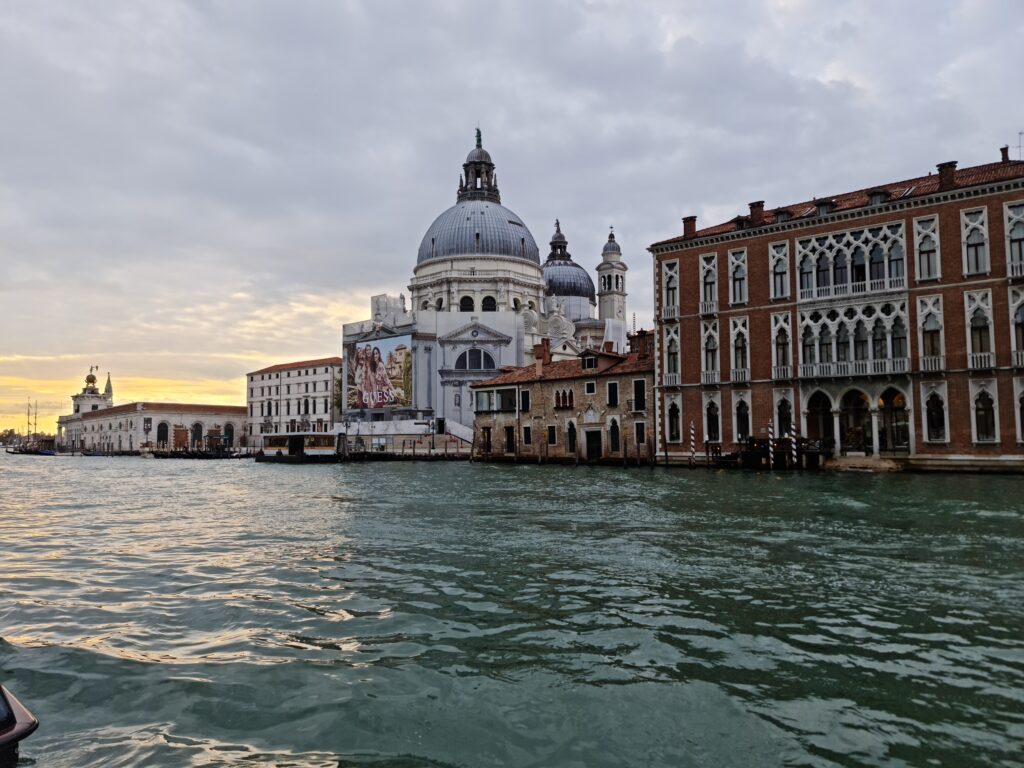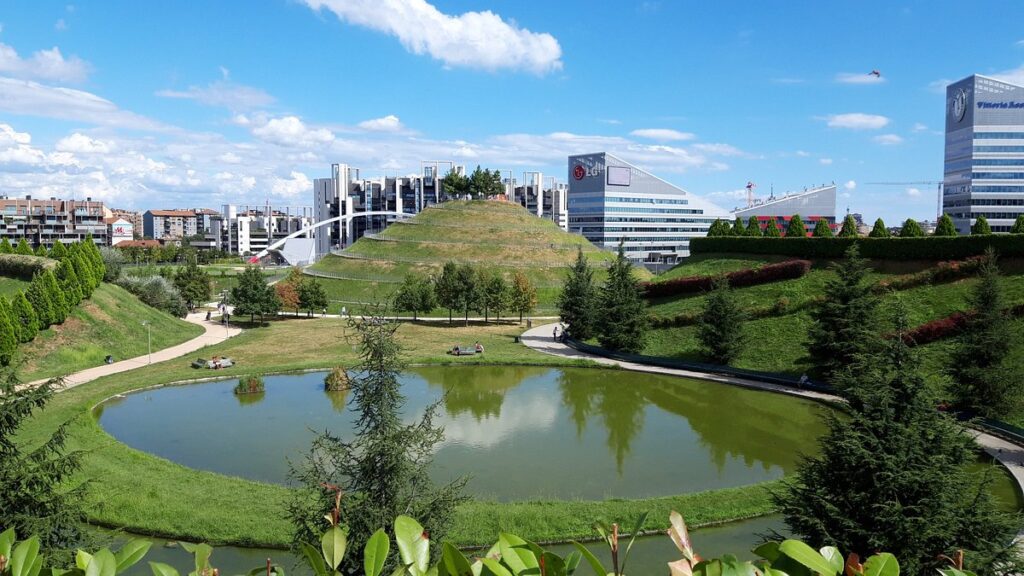Venice is a city that truly captures the imagination. Composed of 118 islands connected by over 400 bridges and countless winding canals, it presents a magical and romantic setting unlike any other in the world. Exploring Venice, however, poses unique challenges: its labyrinthine alleys, waterways, and vibrant history require careful planning to fully appreciate, especially when time is limited.
Having wandered these canals myself, indulged in local cicchetti (Venetian tapas), and savored gondola rides at sunset, I’ve learned how to balance the iconic highlights with authentic local experiences and hidden gems. This comprehensive two-day itinerary is tailored for first-time visitors eager to make the most of their short stay in Venice. It includes practical tips on transport, dining recommendations, neighborhood insights, and detailed plans for sightseeing.
Whether you want to admire the majestic St. Mark’s Basilica, explore the Doge’s Palace, or venture to the colorful islands of Murano and Burano, this guide offers everything you need. Embrace the history, culture, and culinary delights that make Venice an unforgettable destination.
PRE-TRIP INFORMATION
How Many Days You Need in Venice
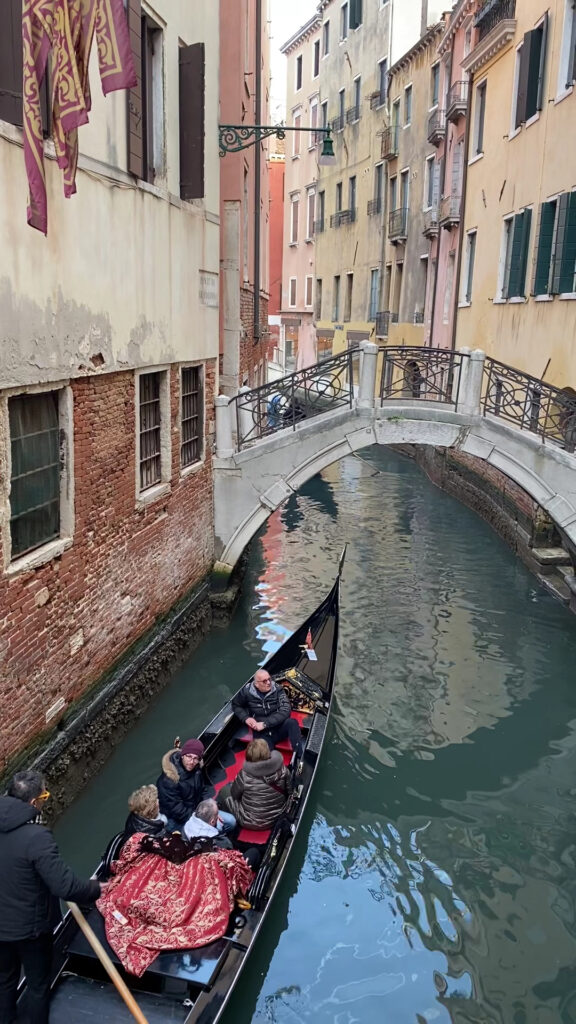
Venice is a treasure trove of sights, culture, and experiences. Ideally, you’ll want to spend between 2 to 4 days here to fully appreciate its beauty and charm.
With 2 days, you can cover the main highlights and take a quick trip to nearby islands like Murano and Burano. However, one day is generally too rushed, leaving little time to soak in the atmosphere or explore beyond the main tourist spots.
Three or more days allow for a slower pace, letting you discover off-the-beaten-path neighborhoods, museums, and enjoy more leisure time. Keep in mind that Venice can get quite crowded, especially in the high summer season, so your experience may be affected by the time of year and the influx of tourists.
| Length of Stay | Experience |
|---|---|
| 1 Day | Rushed visit; only top highlights |
| 2 Days | Main sights + quick island visit; balanced itinerary |
| 3-4 Days | In-depth exploration; off-the-beaten-path areas |
| 5+ Days | Relaxed pace; day trips to surrounding regions |
Best Time to Visit Venice
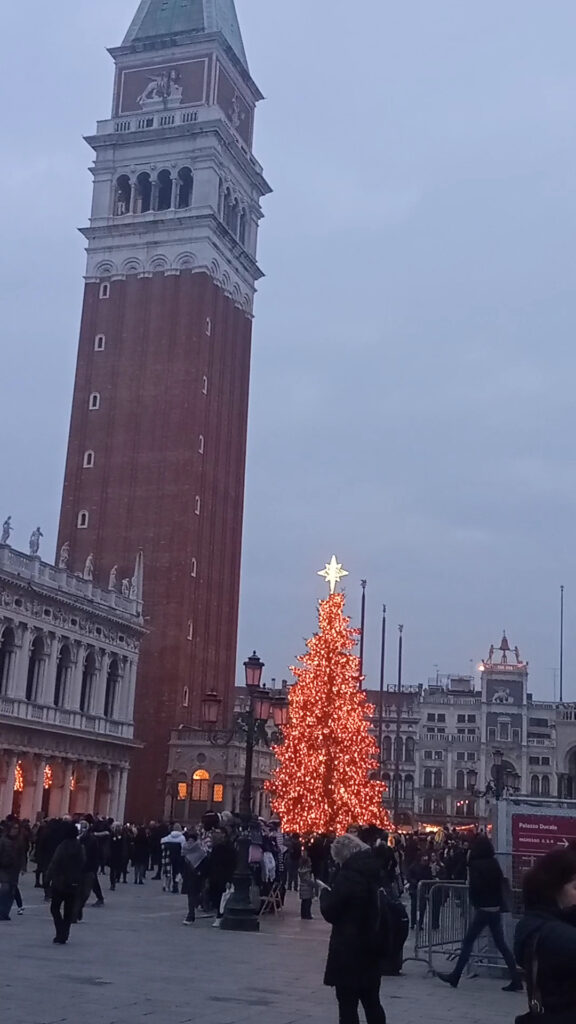
The shoulder seasons of April-May and September-October are the best times to visit Venice. The weather is mild, tourist crowds are thinner, and prices for accommodation and flights are more reasonable.
These months also offer beautiful natural lighting and comfortable conditions for exploring.
Summer months of July and August bring heat, humidity, and overwhelming numbers of tourists, making it less pleasant. Additionally, acqua alta (high water flooding) can occur in fall and winter, which may disrupt plans but also offers a unique experience if you’re prepared.
Winter is cold and quiet, with the exception of the vibrant Carnival season in February, which is a spectacular time to see Venice’s famous masked festivities.
Getting to Venice
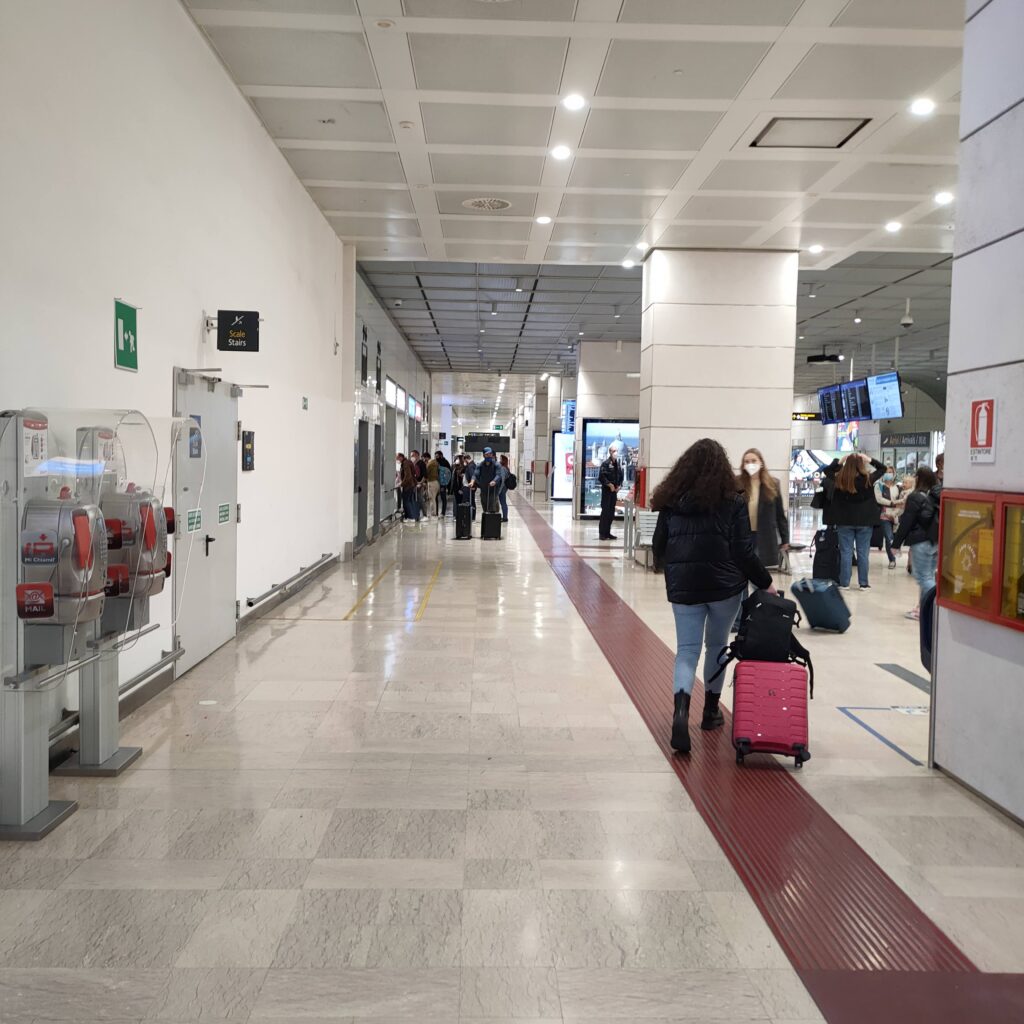
By Air
Venice Marco Polo Airport (VCE) is the main international gateway. From the airport, you can transfer to the city by:
- Alilaguna water bus: Public water buses with several lines connecting the airport to key points in Venice, including San Marco, Rialto, and Lido. Tickets cost around €18 one-way.
- Private water taxi: Faster and more direct, but expensive (€130+), ideal for groups or when carrying heavy luggage.
- Airport bus or land taxi: Cheaper but less convenient, as you still need to transfer to a water bus or walk across bridges.
By Train
Venezia Santa Lucia station is located on the island itself, making it a perfect arrival point. Major Italian cities like Milan, Rome, and Florence have direct connections.
Book tickets via Trenitalia or Trainline for the best deals.
By Bus
International and domestic bus services, such as FlixBus, connect Venice with nearby countries and cities with affordable fares and Wi-Fi onboard.
Getting Around Venice
Walking
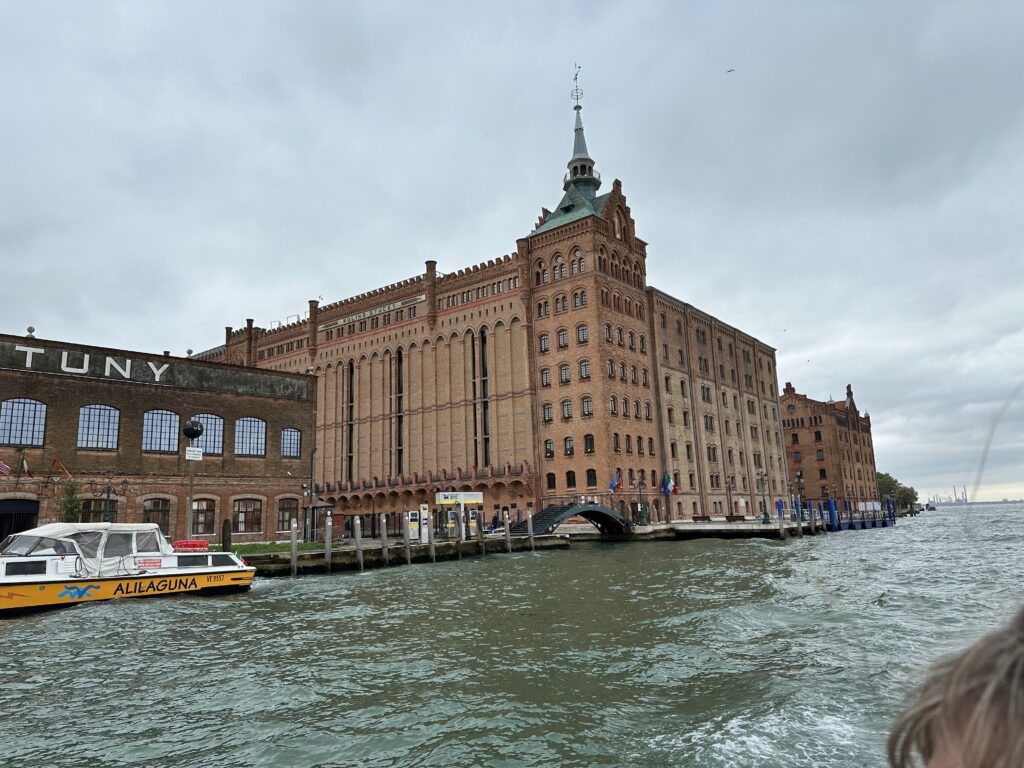
Venice is primarily pedestrianized, and walking is often the best way to explore its narrow alleys and bridges. Comfort is key—wear sturdy, comfortable shoes.
Use Google Maps with offline maps saved for navigation, as cellular service can be spotty.
Vaporetti (Water Buses)
Vaporetti are the public water buses that serve Venice and its lagoon islands. Various lines cover the Grand Canal, Murano, Burano, and Lido.
Tickets cost €7.50 per ride, or you can buy passes for 24 or 48 hours (€20–35). Remember to validate your ticket before boarding.
Water Taxis
Private and fast, water taxis are convenient but costly. They are useful for groups or when carrying heavy luggage.
Gondolas
Iconic but expensive, gondola rides are best enjoyed at sunset for a magical experience. To avoid crowds, book in advance or find less busy boarding points away from main tourist hubs.
Where to Stay in Venice
| Neighborhood | Characteristics | Recommended Hotels |
|---|---|---|
| San Marco | Central, close to main attractions, convenient but crowded and expensive. | Ai Patrizi di Venezia, Palazzo Pianca, Hotel Gorizia a La Valigia |
| Cannaregio | Quieter, authentic, more affordable, vibrant dining and nightlife. | NH Collection Grand Hotel Palazzo dei Dogi, Carnival Palace |
| Dorsoduro | Artistic, relaxed atmosphere, close to museums. | Hotel Nani Mocenigo Palace, Ca’ Maria Adele |
| Mestre (Mainland) | Budget option, easy transport to Venice, less authentic experience. | Various budget hotels and hostels |
Important Tips for Visiting Venice
- Dress code for religious sites: shoulders and knees must be covered.
- Book skip-the-line tickets for St. Mark’s Basilica and Doge’s Palace to save time.
- Be cautious of pickpockets in busy tourist areas.
- Use local dining recommendations to avoid tourist traps.
- Carry cash for gondola rides and small vendors.
- Stay hydrated and be prepared for weather changes.
- Download offline maps and consider an eSIM for reliable data.
- Avoid accepting unsolicited “gifts” (e.g., roses) from strangers to prevent scams.
- Book accommodations and major tours well in advance, especially in high season.
- Explore early mornings and late evenings for fewer crowds and cooler temperatures.
DAY-BY-DAY ITINERARY
Day 1: Iconic Venice – St. Mark’s Square, Historic Landmarks, and Culinary Delights
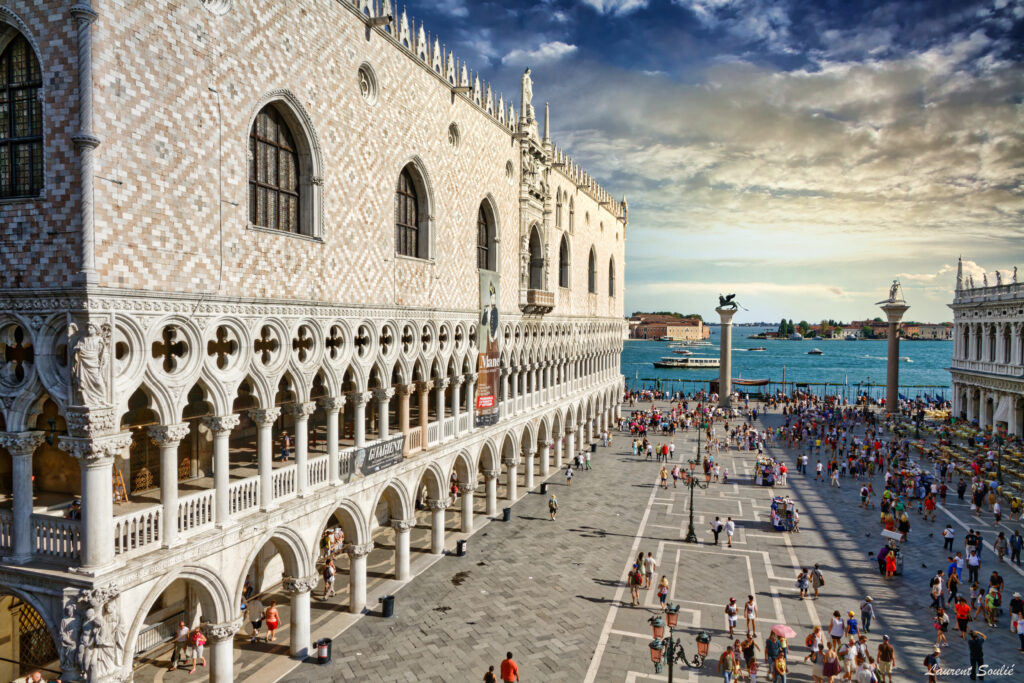
St. Mark’s Square (Piazza San Marco)
St. Mark’s Square is the historical and social heart of Venice.
Unique in the city as the only piazza, its vast open space is framed by remarkable architecture and bustling with life. Highlights include the Doge’s Palace, St.
Mark’s Basilica, the Campanile (bell tower), and the Clock Tower (Torre dell’Orologio).
Visiting early in the morning is ideal to avoid crowds and enjoy the serene atmosphere. The square’s arcades house shops and cafes where you can sip coffee and soak in the surroundings.
Remember the dress code if you plan to enter religious sites.
St. Mark’s Basilica
Dating from the 9th century, this Byzantine-style cathedral is renowned for its dazzling gold mosaics, five majestic domes, and priceless treasures like the four bronze horses. Inside, you’ll find the Pala d’Oro altar, intricate mosaic floors, and the St.
Mark’s terrace offering panoramic views over the square.
Opening hours are generally 9:30 AM to 5:15 PM, with variation on Sundays. Entry costs between €3–6, and skip-the-line tickets are highly recommended.
Booking early morning tours with terrace access ensures a more intimate and less crowded experience.
Doge’s Palace (Palazzo Ducale)
This Gothic palace was the residence of the Doge and the seat of Venetian government. Explore its opulent chambers adorned with frescoes, and cross the iconic Bridge of Sighs leading to the historic prisons.
Your ticket also grants access to the Correr Museum, National Archaeological Museum, and Biblioteca Marciana.
For an exclusive experience, the Secret Itineraries Tour allows entry to restricted areas, but must be booked well in advance. Opening hours typically run from 9 AM to 7 PM (varies by season), and tickets cost around €25.
Skip-the-line options are strongly advised.
St. Mark’s Campanile (Bell Tower)
Take the elevator to the top of this towering landmark for breathtaking views over Venice and the surrounding lagoon. Tickets cost approximately €10–12, with operating hours from 9:30 AM to evening.
Given that the St. Mark’s terrace also offers a view, choose one to avoid repetition.
Grand Canal Walk to Rialto Bridge
From St. Mark’s Square, stroll through the bustling San Marco district towards the Rialto Bridge, soaking in the lively atmosphere of narrow canals and historic shops.
The 16th-century Rialto Bridge is the oldest crossing over the Grand Canal, lined with souvenir and Murano glass shops.
It’s best to visit early or late in the day to avoid crowds. The bridge’s vantage point offers stunning views of the canal’s narrowest point, ideal for photography.
Cicchetti Tasting at Cantina Do Mori
Established in 1462, Cantina Do Mori is one of Venice’s oldest bacari (traditional wine bars). Sample cicchetti—Venetian finger foods akin to tapas—paired with local wine.
Enjoying cicchetti standing up at the bar is an authentic Venetian experience and a great way to taste local flavors.
Be sure to try multiple bacari throughout your visit to discover diverse offerings and ambiance.
Rialto Market
Located near the Rialto Bridge, this vibrant market is famed for fresh fish and produce. Best visited in the morning, the market buzzes with vendors and locals alike, offering a colorful and sensory-rich experience.
Note that the market is closed on Sundays.
Lunch at Traditional Venetian Seafood Restaurants
Head to Cannaregio for lunch at establishments such as Trattoria Bar Pontini or Al Mariner. Relish Venetian specialties like mixed seafood antipasto, spaghetti alla bùsera (spicy shrimp pasta), and spaghetti nero di seppia (cuttlefish ink pasta).
Pair your meal with a local Select spritz or classic Aperol spritz for a refreshing touch.
Explore Cannaregio and San Polo Neighborhoods
Escape the crowds by exploring these quieter, authentic Venetian districts. Visit the historic Jewish Ghetto, browse artisan workshops crafting masks and gondolas by hand, and check out vintage shops.
End your stroll with a glass of white wine or spritz at a local bàcaro.
Dinner at Il Paradiso Perduto (Cannaregio)
Enjoy a lively, traditional seafood dinner at Il Paradiso Perduto, known for its Italian-only menu and authentic Venetian dishes. Recommended specialties include antipasto misto di pesce, bigoli pasta with scampi alla busara, and nero di seppia.
Reservations are advised as the restaurant is popular, and service may be slow but the atmosphere is vibrant.
Evening at Vino Vero Natural Wine Bar
Cap off your day at Vino Vero, a trendy natural wine bar offering a lively atmosphere, excellent local wines, music, and canal-side seating. It’s a favorite among locals and visitors alike.
Day 2: Islands, Art, Food Tours, and Sunset Gondola
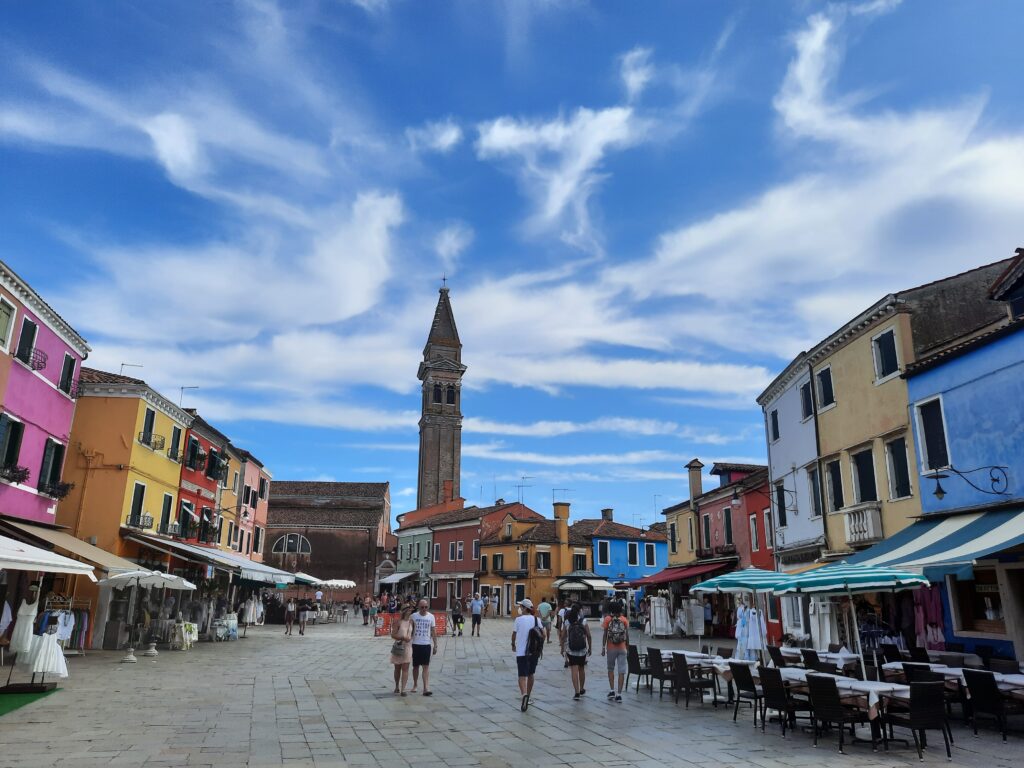
Murano & Burano Islands Small Group Boat Tour
Start your day early with a 5-hour private boat tour to the colorful islands of Murano and Burano. Murano is renowned for its master glassblowers, where you can watch live demonstrations and browse exquisite glass shops.
The Murano Glass Museum offers a deep dive into centuries of glassmaking history.
Burano is famous for vibrant houses, delicately handmade lace, and local pastries such as bussolà cookies. Enjoy free time to wander the canals and capture stunning photos of this charming island.
Optionally, visit the Lido island in the late afternoon or early evening for its beaches and Art Deco architecture.
Roaming Castello & San Marco Districts
Upon returning, enjoy unstructured wandering in the Castello and San Marco districts. Explore quiet backstreets, discover shops, and relax with a spritz at a local bàcaro.
This is your chance to savor Venice’s authentic charm away from the busiest areas.
San Giorgio Maggiore Bell Tower
Take a short vaporetto ride to San Giorgio Maggiore island. Visit the church for free and ascend the bell tower (€6) for breathtaking panoramic views of Venice and its lagoon.
The bell tower operates daily from 10 AM–1 PM and 2–6 PM, making it an excellent daytime excursion.
Libreria Acqua Alta Bookstore
Discover this unique bookstore near the Rialto area, famed for its quirky use of gondolas, bathtubs, and crates to protect books from floods. It’s a whimsical spot filled with new, rare, and used books, along with friendly resident cats.
The bookstore also makes for an excellent photo opportunity.
Cicchetti Bars near San Marco
Sample quick cicchetti and spritz at nearby bars such as Bar Ai Santi, Osteria Ai Promessi Sposi, and Cantina Do Spade. Each offers a distinct atmosphere and delicious small plates, perfect for an afternoon or early evening snack.
Gelatoteca Suso
Cool down with award-winning gelato from Gelatoteca Suso. Although popular and often with a line, their creamy, artisanal flavors make the wait worthwhile.
Eat Like a Local: 3-Hour Food Tasting Walking Tour
Join an evening small-group tour that takes you through eight local establishments to sample Venetian specialties including coffee, seafood cicchetti, sarde in saor (sweet and sour sardines), homemade pasta, tramezzini sandwiches, regional red wine, and artisanal gelato. A local guide enriches the experience with history and culture.
Book the latest tour slots around 5 or 5:45 PM to fit this in alongside other activities.
Sunset Gondola Ride
End your trip with a quintessential Venice experience: a 30-minute sunset gondola ride. Official city rates are €90 before 7 PM and €110 after, per boat (max 5 people), payable in cash only.
To avoid crowds, seek less busy boarding points away from main tourist hubs. Alternative options include kayak or electric boat tours for a unique perspective on Venice’s canals.
Dinner Recommendations (Optional)
If you wish to dine again, revisit favorites from Day 1 or explore new local eateries in San Marco or Cannaregio for a final taste of Venetian cuisine.
ADDITIONAL SECTIONS
What to Do With More Time in Venice
- Basilica dei Frari and Scuola Grande di San Rocco: Home to masterpieces by Tintoretto and other Renaissance artists.
- Ca’ Rezzonico Palace: An 18th-century palace showcasing Venetian art and interiors.
- Peggy Guggenheim Collection: Modern art museum with works by Picasso, Dalí, and Kandinsky.
- Teatro La Fenice: Tour or attend opera performances in this historic venue.
- Day trips to Verona, Padua, Dolomites, Lake Garda, or extended lagoon islands including Torcello.
What to Do With Less Time in Venice
For a condensed one-day visit, prioritize early morning at St. Mark’s Square, Basilica, and Doge’s Palace, followed by an afternoon at Rialto Bridge and Market, capping the day with a gondola ride.
Skip-the-line tickets and early starts are critical to maximize your time.
Getting To and From Specific Areas
- From Marco Polo Airport: Use Alilaguna water bus lines or private water taxis.
- From Venezia Santa Lucia train station: Walk or take vaporetto to hotels.
- Between islands: Rely on vaporetto routes and transport passes for convenience.
Seasonal Considerations
Acqua Alta, or flooding, is most common in autumn and winter. Plan accordingly with waterproof shoes and flexible schedules.
Summer brings crowds and heat, so schedule outdoor activities early or late and stay hydrated. Spring and fall provide the best balance of weather and crowd size.
Budgeting for Your Trip
| Item | Approximate Cost |
|---|---|
| Skip-the-line Basilica + Doge’s Palace tour | €40–50 |
| Gondola ride (30 mins) | €90–110 per boat |
| Vaporetto day pass | €20–35 |
| Meals: Budget pizza/sandwiches | €3–10 |
| Meals: Seafood lunch | €15–30 |
| Accommodation (Mid-range) | €100–200+ |
| Accommodation (Luxury) | €250+ |
To save, consider vaporetto passes, dining away from main squares, and early booking of tours and hotels.
FAQ SECTION
How many days are enough in Venice?
Two full days in Venice are usually sufficient to see the major highlights, including St. Mark’s Square, Doge’s Palace, Rialto Bridge, and a gondola ride.
This time also allows for a visit to nearby islands like Murano and Burano. One day is quite rushed and limits exploration, while three or more days enable a deeper, more relaxed experience.
The ideal length depends on your interests and travel style.
What is the best time of year to visit Venice?
The best time to visit is during the shoulder seasons of April-May and September-October, when the weather is pleasant, crowds are thinner, and prices are more reasonable. Avoid the hot, crowded summer months of July and August.
Winter is cold and quiet but features the famous Carnival season in February. Be mindful of acqua alta (flooding) in fall and winter.
How do I skip the lines at St. Mark’s Basilica and Doge’s Palace?
Booking skip-the-line tickets or guided tours online in advance is essential to avoid long waits. Several options include combined tours covering both sites with early access or terrace visits.
Arriving early in the morning can also help reduce queue times, but purchasing tickets beforehand guarantees smoother entry.
Is a gondola ride worth it? How much does it cost?
A gondola ride is a quintessential Venetian experience, especially at sunset, offering a unique perspective of the canals and city. Official prices are €90 for 30 minutes before 7 PM and €110 after, per boat (up to 5 people), payable in cash.
While expensive, many find the experience memorable and worthwhile. Alternatives include shared rides or vaporetto rides for budget travelers.
What are the best neighborhoods to stay in Venice?
San Marco is the most central and convenient but crowded and pricey. Cannaregio offers a quieter, more authentic atmosphere with vibrant dining options and better value.
Dorsoduro is artistic and relaxed, close to museums, and Mestre on the mainland is budget-friendly but less authentic. Choose based on your preferences for convenience, atmosphere, and budget.
How do I get from the airport to my hotel in Venice?
From Venice Marco Polo Airport, you can take the Alilaguna water bus to various points in Venice, a private water taxi for direct but costly transfers, or a land bus/taxi to Piazzale Roma followed by a vaporetto or walking. Water transport is the most scenic and convenient for reaching the islands.
Can I walk everywhere in Venice or do I need public transport?
Most of Venice’s central attractions are within walking distance. The city’s compact nature and pedestrianized labyrinth of alleys make walking the most practical transport mode.
For longer distances, trips to islands, or to save time, vaporetti (water buses) and water taxis are advisable.
What are cicchetti and where can I try them?
Cicchetti are small Venetian snacks akin to tapas, typically served in local bàcari (wine bars). They are eaten with fingers alongside wine or spritz, often standing.
Cantina Do Mori, Bar Ai Santi, and Osteria Ai Promessi Sposi are excellent spots to taste authentic cicchetti.
How do I get to Murano and Burano islands?
Murano and Burano are accessible by vaporetto water buses from Venice. A single trip costs around €10; purchasing a day pass is economical if visiting both islands.
Guided boat tours also operate, providing insightful commentary and covering both islands efficiently.
Are there free or affordable ways to see Venice’s highlights?
Walking the city is free and enjoyable. Many churches are free to enter or have minimal fees.
The Fondaco dei Tedeschi rooftop terrace offers free panoramic views with prior online booking. Using vaporetto passes reduces transport costs.
Early morning and evening explorations avoid crowds without extra cost.
What should I eat in Venice?
Try Venetian specialties such as risotto al nero di seppia (cuttlefish ink risotto), bigoli pasta, sarde in saor (marinated sardines), and fresh seafood. Cicchetti are perfect for sampling multiple small dishes.
Don’t miss gelato from artisanal shops like Gelatoteca Suso and traditional pastries like tiramisu and bussolà cookies from Burano.
Is Venice safe for solo travelers?
Venice is generally safe for solo travelers, especially during daylight. Exercise common precautions against pickpockets in crowded tourist areas.
Avoid isolated alleys at night and be mindful of your belongings. Venice’s pedestrian-friendly layout encourages safe exploration on foot or vaporetto.
How do I avoid tourist traps in Venice?
Research dining spots away from main squares, avoid restaurants with menus in multiple languages or photos of dishes outside, and seek local recommendations. Using local bàcari for cicchetti and choosing less central accommodations like Cannaregio help avoid overly touristy experiences.
What are some hidden gems to visit in Venice?
Explore the Jewish Ghetto in Cannaregio, Palazzo Contarini del Bovolo with its spiral staircase, Libreria Acqua Alta bookstore, and the quieter Dorsoduro and Castello districts. Small artisan workshops and local markets offer genuine Venetian culture beyond the usual tourist circuit.
Can I visit Venice’s famous churches for free?
Some churches like Basilica di Santa Maria della Salute have free entry, while others charge a small fee or suggest donations. St.
Mark’s Basilica requires an entrance fee, but some adjacent churches and chapels are free or low cost. Check individual sites for current policies.
What is the Venice tourist access fee in 2025?
Starting April 18, 2025, Venice imposes a visitor entrance fee for day-trippers. The fee ranges depending on season and time, while overnight guests must apply for an exemption to avoid fines.
Registration is required even for exempt visitors. Plan ahead to comply with these regulations.
CONCLUSION
Two days in Venice offer a whirlwind yet rewarding immersion into one of the world’s most captivating cities. From the grandeur of St.
Mark’s Square, the awe-inspiring mosaics of the Basilica, to the historic chambers of the Doge’s Palace, you’ll delve into Venice’s rich tapestry of history and art. The walk along the Grand Canal to Rialto Bridge and the vibrant Rialto Market showcase the city’s lively spirit.
Exploring the less crowded neighborhoods like Cannaregio and San Polo allows you to connect with authentic Venetian life, while sampling cicchetti and local wines delights your palate. On day two, the colorful islands of Murano and Burano introduce you to traditional crafts and picturesque streets, enriching your experience.
Planning is key: booking skip-the-line tickets and tours, choosing the right accommodation, and understanding transport options maximize your time and comfort. I encourage you to embrace the joy of wandering, getting lost in the alleys, and discovering hidden gems that don’t appear on every map.
Be mindful of seasonal considerations such as crowds, weather, and acqua alta, and prepare accordingly. Venice’s magic lies not only in its famed sights but in its unique atmosphere and cultural rhythms.
After these two days, you’ll likely find yourself eager to return for a longer stay, to uncover even more treasures in this timeless city and its enchanting lagoon.

